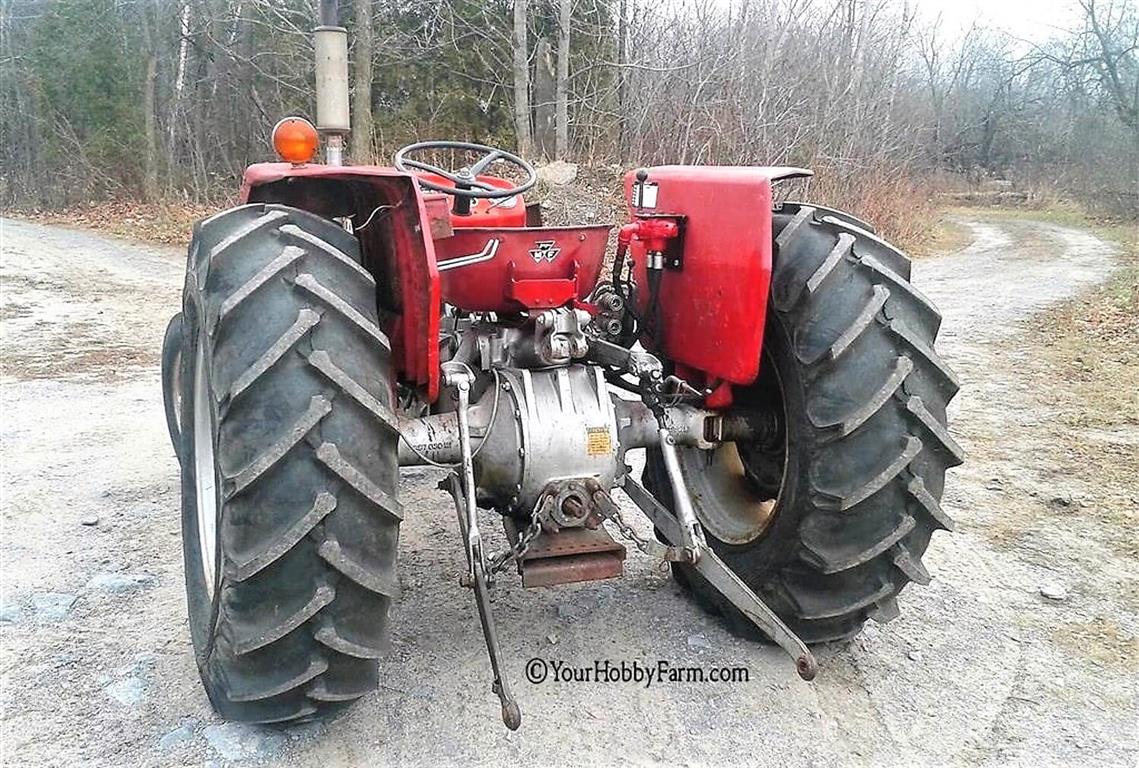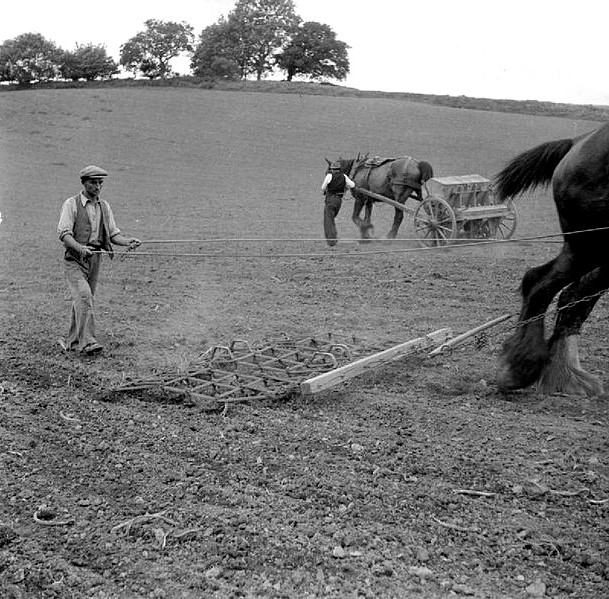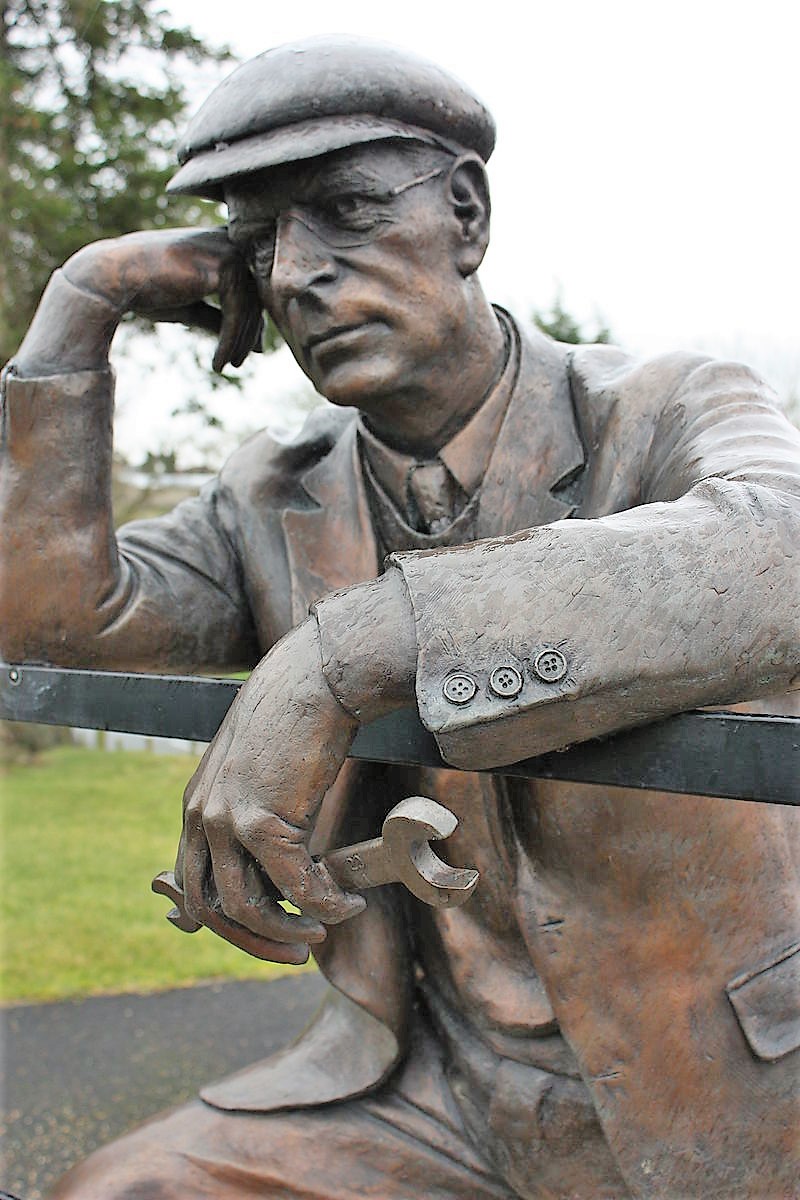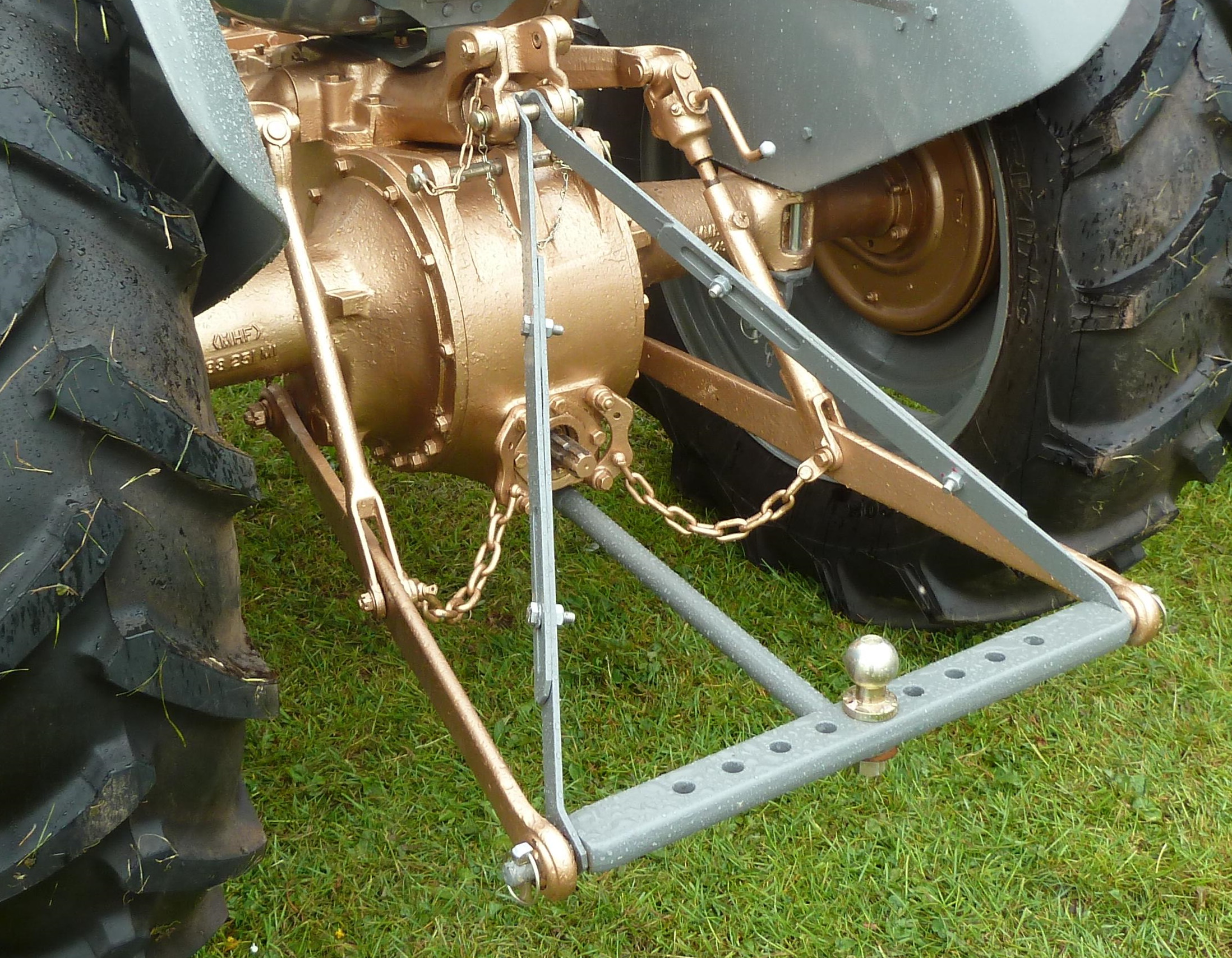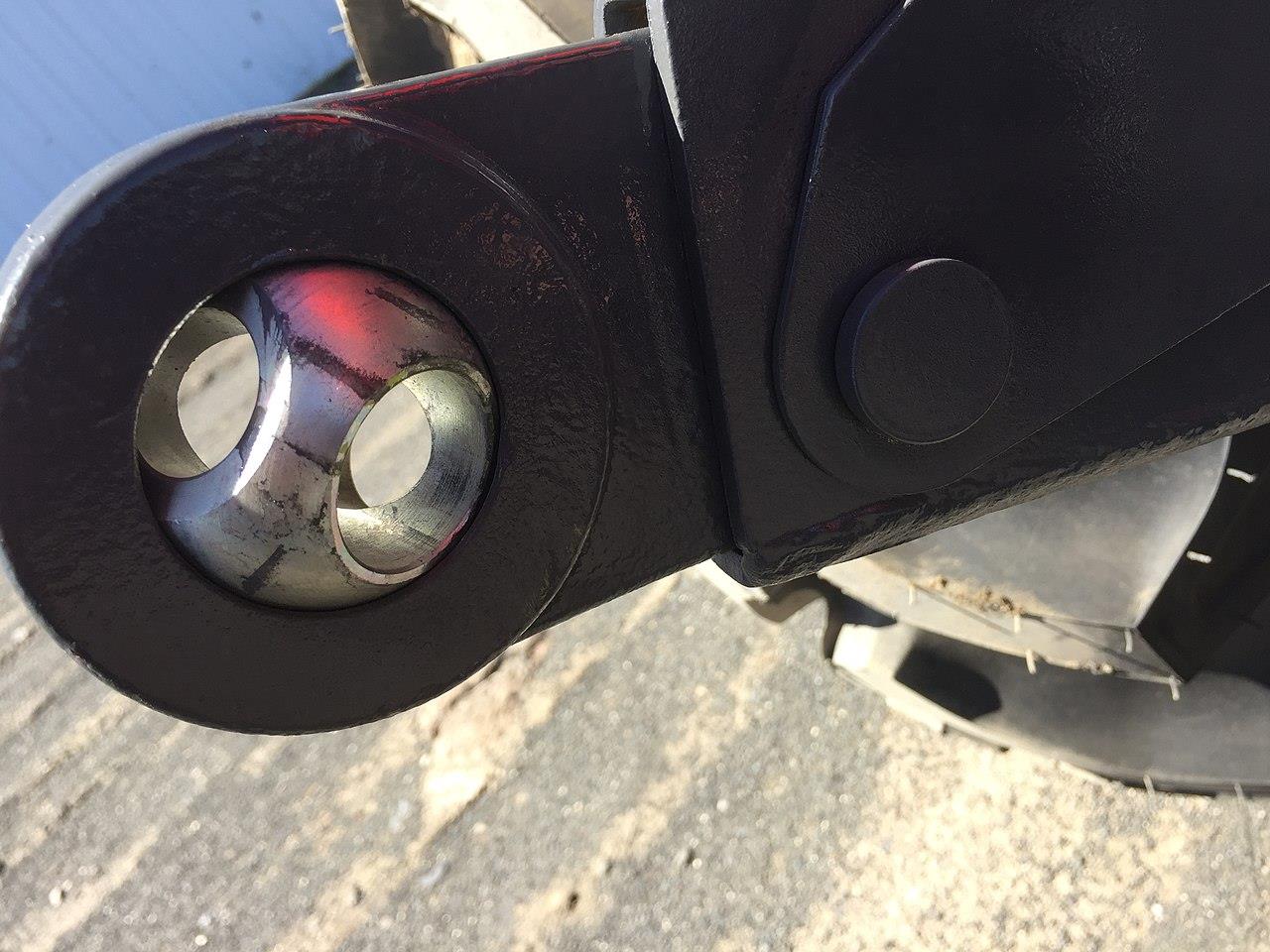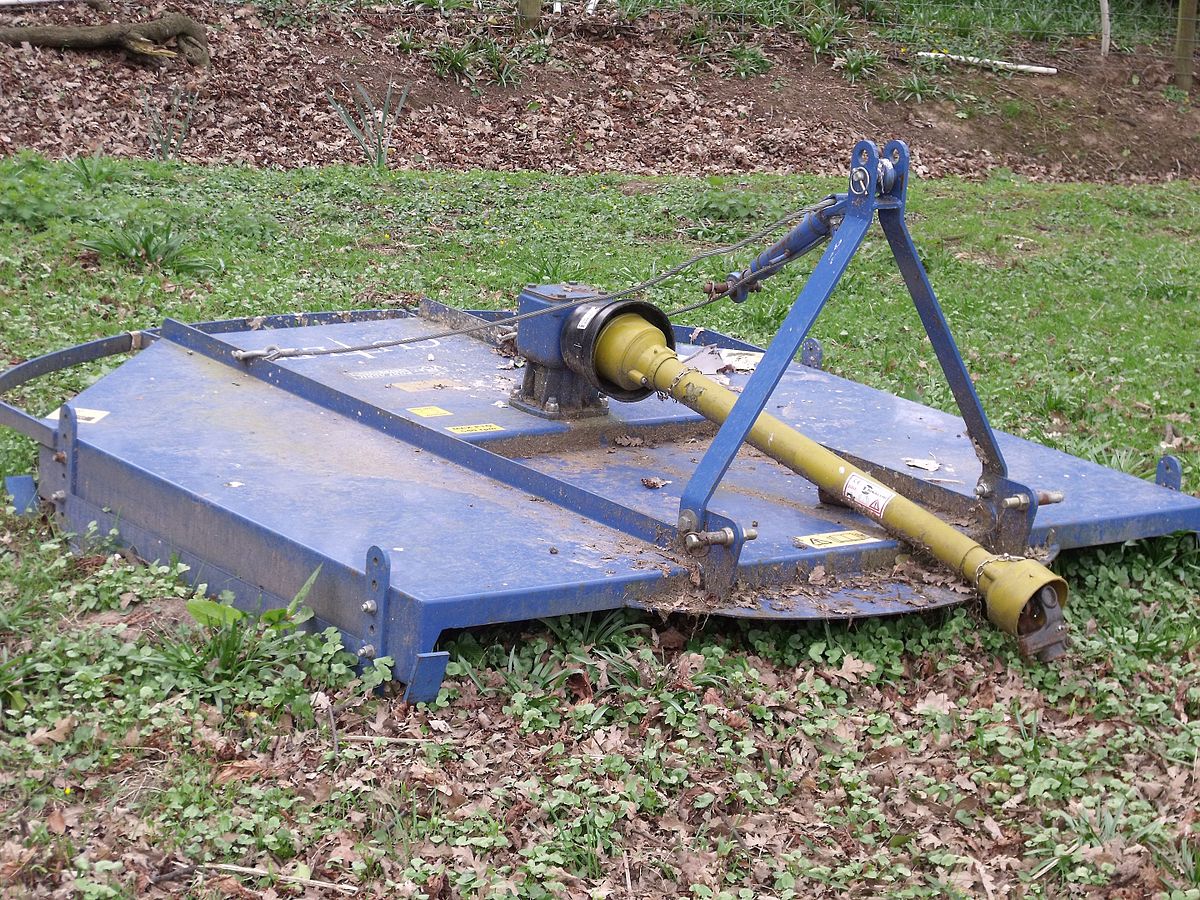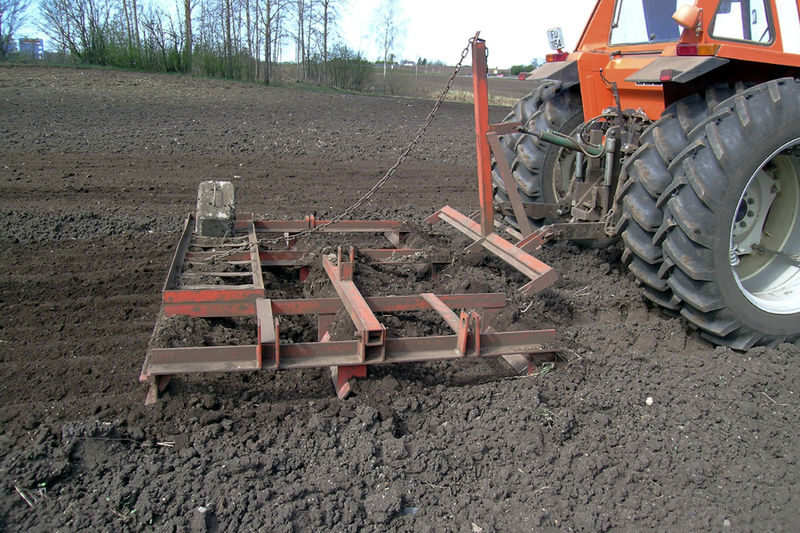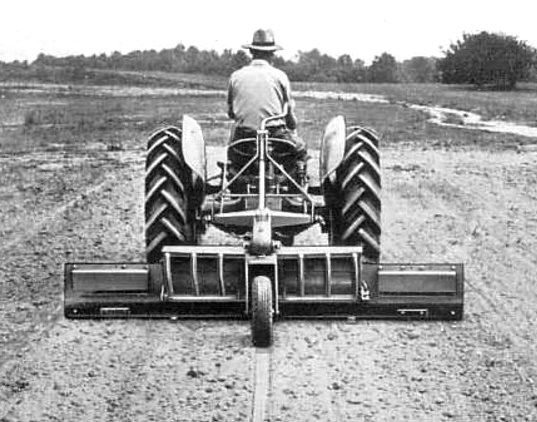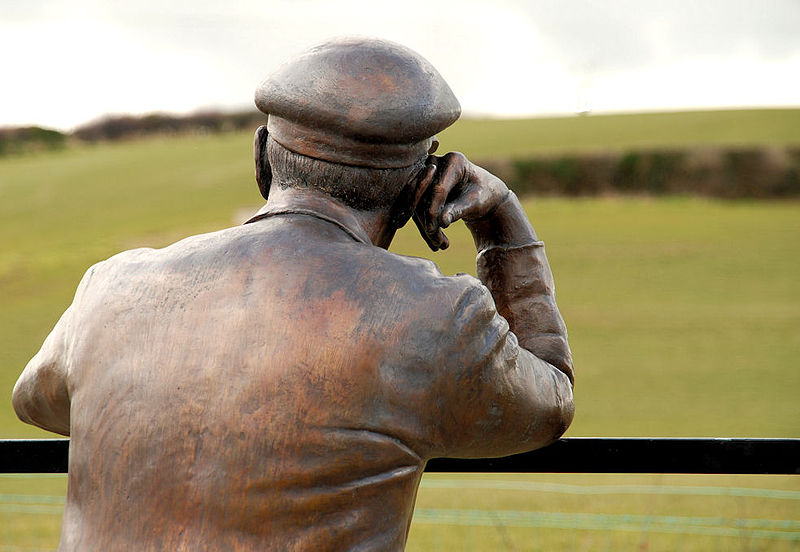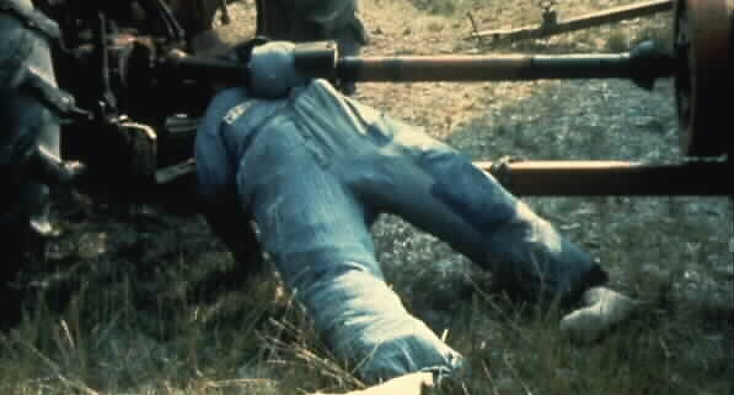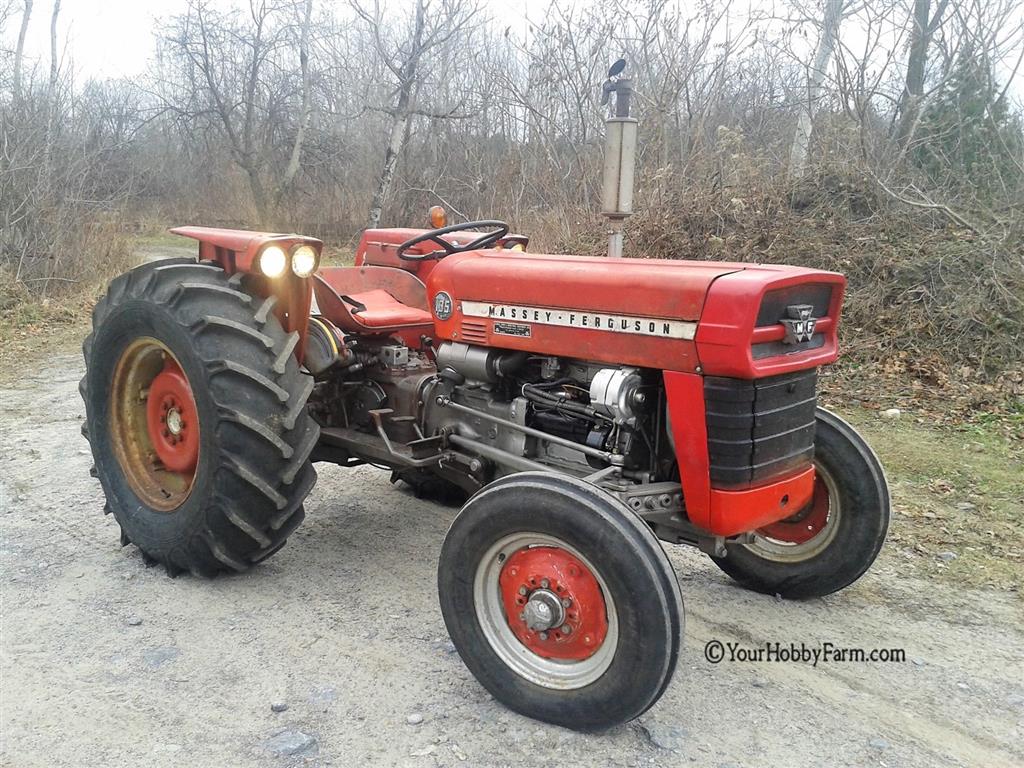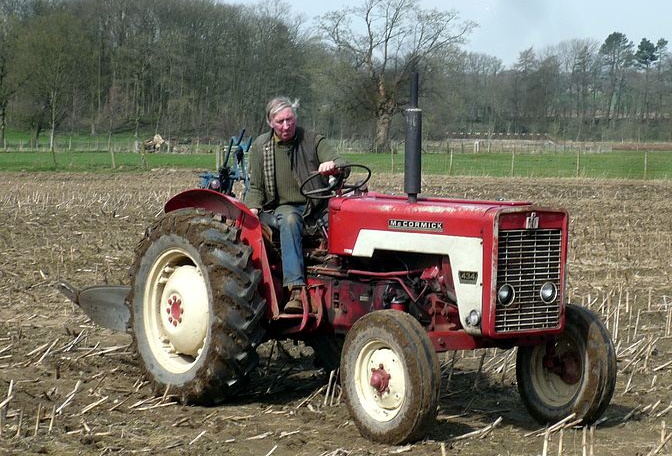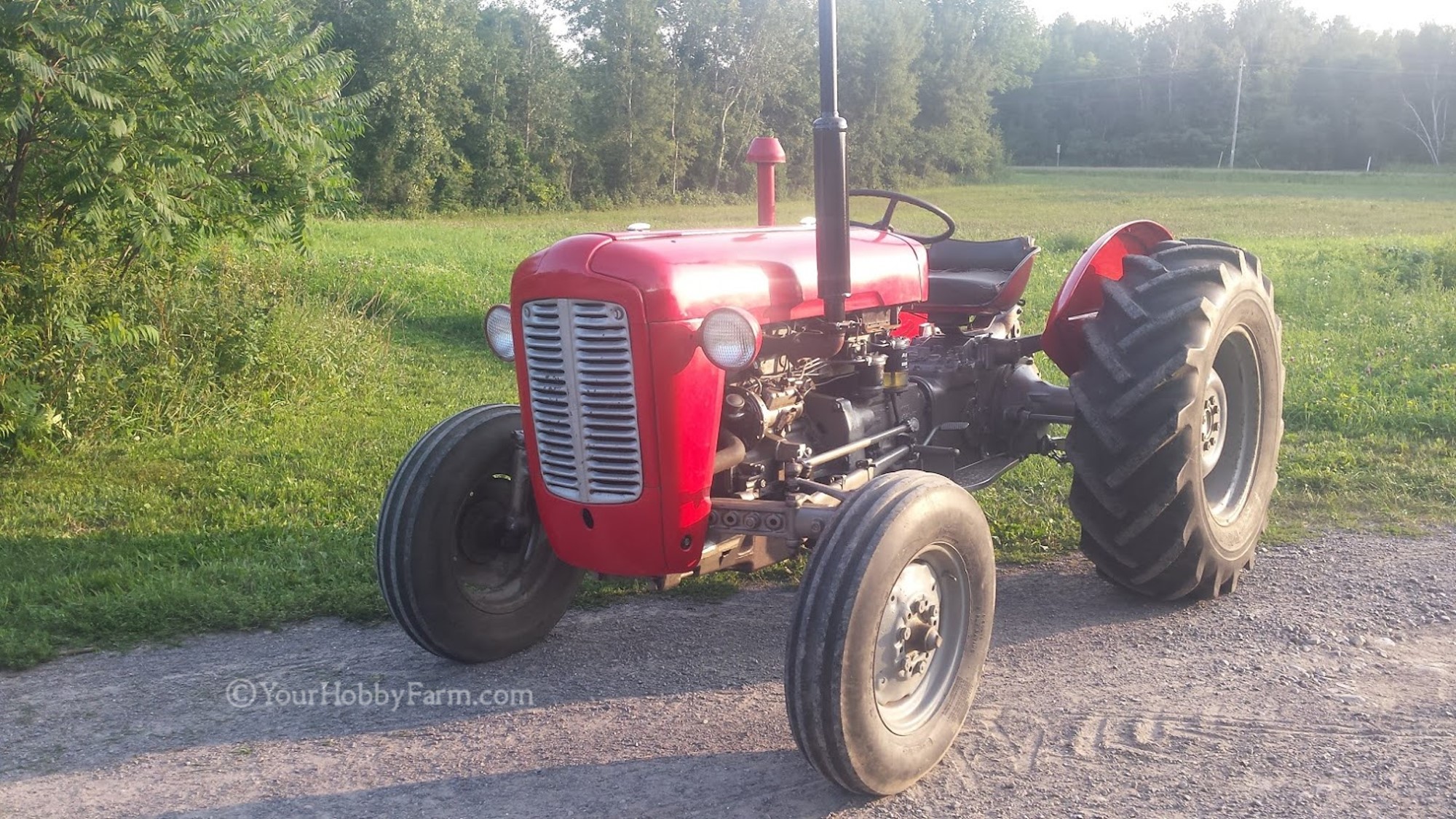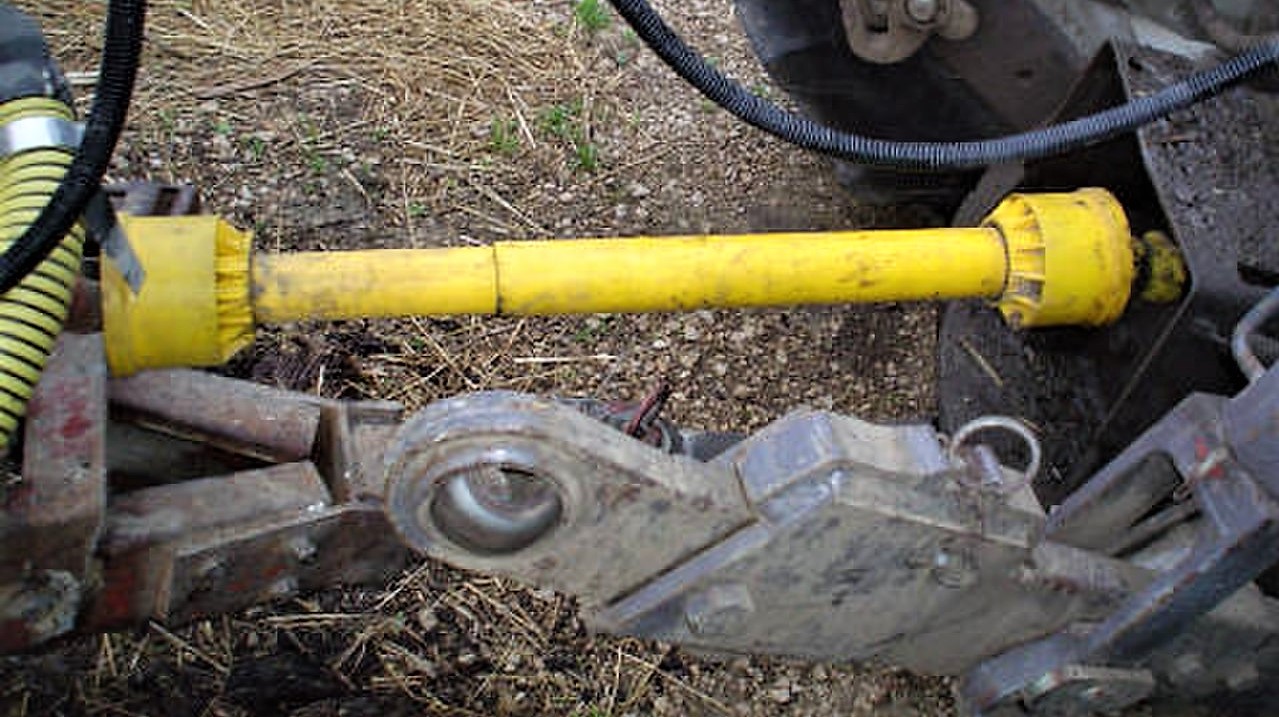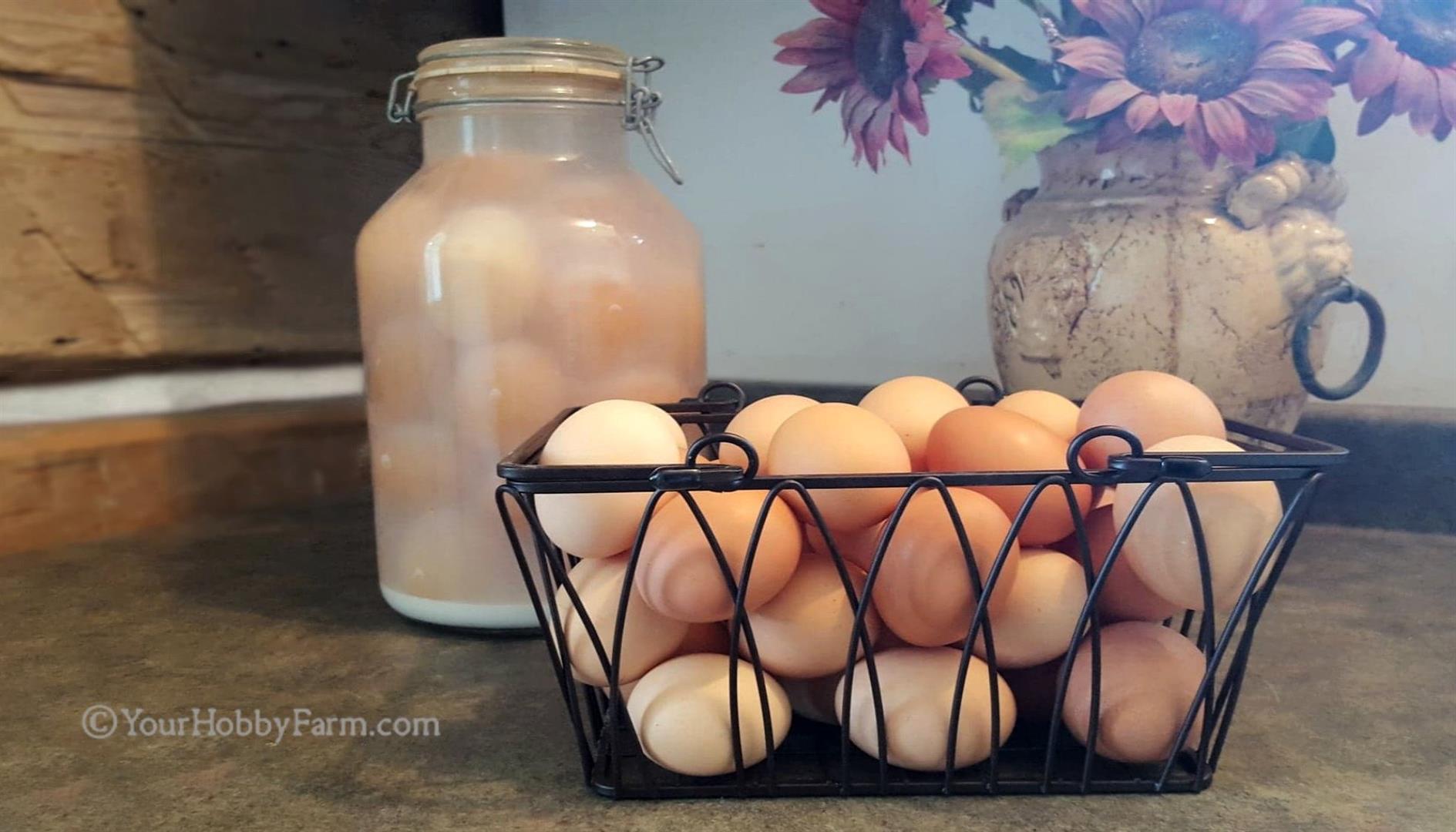The 3 Point Tractor Hitch
The 3 point tractor hitch introduced change to many aspects of farming in the early 1900s. Soon after the debut of the tractor, this relatively small, innovative invention helped to hail the dawning of a new era in agricultural life. It opened up the possibility for higher yield, reduced physical labor, and it increased the functionality of a farmer's tractor.
Invented by Harry Ferguson1 in 1936, his first production tractor incorporated the Ferguson System, a 3 point tractor hitch, with automatic draft control. Along with the tractor's built-in 3 point hitch, the first 3 point implements were introduced as well.
This invention by Harry Ferguson has been recognized as one of the greatest advances in agricultural mechanization. Today, nearly every tractor incorporates a version of Ferguson’s 3-point hitch system.
"Having Hitched the Horses to the Harrow"
What changes did Ferguson's hitch system bring to the lives of the farming communities? A memoir describes some of these changes:
"...The plowing of the day before had left the ground turned and cloddy with rough furrows and ridges. Me and Pa tumbled into the kitchen at the crack of dawn and put down hearty a breakfast. Then, having hitched the horses to the harrow, we got to work. The field behind us began to smooth out as we continued to prepare the ground for sowing. The work was hard but harvest was going to be worth it.
"...But a day dawned in 1953 that became a pivotal point. We purchased a new Ferguson tractor which had a built-in a linkage system - a tractor hitch for implements. From that day forward, things around our farm began to change. The farm horses, Jack and Doc, didn't seem to mind the increasing leisure of their days and we were able to accomplish more..." 2
From sunup to nightfall, farm life had always been labor intensive. Farm families had to work the ground for their sustenance and survival. Springtime to fall, planting to harvest, both humans and beasts persistently toiled.
Plowing, harrowing, seeding and harvesting, the cycle continued year after year, without much change, generation after generation. But when the tractor appeared it quickly became the farmers' work partner.
When farm tractors were first used, as had been done with the horse-drawn farming implements, most heavy farm equipment was hitched to the tractor by a drawbar,3 and the wheeled implement was simply pulled. Then someone wondered if it could it be possible to use the weight and resistance of the implements to gain more effective use of the tractor...
Switch the Hitch!
So, inventor Harry Ferguson took on the challenge and came up with a solution. He decided to switch the hitch! In 1926, Ferguson designed the three-point linkage for agricultural tractors in Britain.
This 3 point tractor hitch is designed to attach equipment to the back end of the tractor. It is made up of several components that work in conjunction with each other. These components include the lifting arms, attaching points, stabilizers, and the tractor's hydraulic system.
One of the primary benefits of the three-point tractor hitch system is to transfer the weight and resistance of an implement to the drive wheels of the tractor. This increases the tractor's usable traction while still having the same power, weight, and fuel consumption.
A Tractor Hitch without a Glitch!
This three point linkage system forms the shape of a triangle. It functions with two movable arms and one center adjustable link at the top.
The top part of the linkage system is located above the tractor's differential beneath the back of the seat. This top link connects to the top part of the implement's matching triangle attachment apparatus. This top link is adjustable, but it's usually not powered by the tractor's hydraulic system.
The two lower arms are the hitch's lifting arms. These are controlled by the tractor's hydraulic system to enable lifting and lowering of the tractor hitch. There is also a manual crank for leveling the implement at the tip of the right arm.
At the end of each of these two lower arms of the hitch there is a ball with a hole through which an implement is attached. The implement is secured to the tractor's hitch by spring pins that are inserted through the ends of an implement's shaft after it's been put through the holes in the tractor's lower arms. In this way each arm of the tractor's hitch attaches securely to the points of the implement's hitch.
The hitch's lifting arms are powered by the tractor's hydraulic system. The hydraulic system is controlled by the driver of the tractor. Often a variety of settings are available.
One of the features in many 3 point tractor hitches is the draft control mechanism. The draft of the implement refers to the amount of force needed to pull it. A 'draft and position responsive hitch control' maintains an implement at a constant working depth in spite of varying working conditions. When the draft control senses that there is extra strain on the hitch, due to unevenness of ground for example, the hydraulic system raises the plow just enough to get through the hard spot. Then when the draft decreases, it returns the plow to the desired depth.
Another of the tractor's functions that coordinates with the use of the three point hitch is the PTO or power take-off. The PTO is a standardized shaft on the back of the tractor located in the center bottom of the three point hitch area. This device, when a mechanized tool is attached to it, provides power to the implement's moving parts through the tractor's engine.
How the 3 Point Hitch Helped to Revolutionize Farming
Years ago, it would have been hard to imagine how the introduction of the tractor hitch would allow mechanized implements to do what folks once did by hand.
Harry Ferguson was a visionary. He saw that creating a 3 point tractor hitch, building it into the back of the tractor, and standardizing this linkage to be used across a wide array of implements would revolutionize farming.
The Ferguson three-point linkage system that enables the hitching of implements has allowed farmers to attach a countless variety of farm machinery and equipment to be operated or towed. Controlled through the tractor's hydraulic system and powered by the tractor's PTO (power take off) a farmer can accomplish far more than ever before, increasing safety and saving labor, time and cost.
Soon plows (or ploughs), harrows, seeders, combines, and balers, performed tasks that were once accomplished by hand or with simpler horse drawn tools.
Since then, there have been modifications from the first patent with the introduction of different controls, widening the spectrum of capabilities for the farm tractor.
Nowadays we're accomplishing even more tractor-driven tasks like broadcasting fertilizers, tillage, planting, haying, brush hogging, mowing and snow removal, wood splitting and wood chipping, trenching and post hole digging... We have backhoe attachments, logging winches, stump grinders and cement mixers, harrows, rakes. carryalls and bale spears; the number of tasks accomplished with a three-point hitch is endless.
The incorporation of the 3 point tractor hitch, along with the addition of the PTO, has increased the usability of one farm tractor beyond what could have been imagined.
This innovative addition to tractor design has completely altered the way countless farmers perform their profession, transforming the ancient agricultural lifestyle.
Harry Ferguson, the Irish-born influential inventor and engineer, died on October 25, 1960. This man affected countless lives by making the mass production of simple, reliable and affordable tractors and their revolutionizing components a reality. His company also provided wide a variety of implements and accessories for these tractors. The legacy that Ferguson left through the development of the modern tractor and the Ferguson 3 point linkage system will live on for generations.
And One More Thing:
What About the Different Categories of 3 Point Hitches?
One more thing that we need to talk about is the different categories of 3 point hitches. Instead of going into the details, we'll turn it over to 'Tractor Mike'! He does a great job of explaining it in this video. Have a look!
Footnotes:
1 Harry Ferguson is credited with the invention of the 3 point hitch. Some have questioned this. While the development of the 3 point hitch came about as the result of combined talents of several people, Harry Ferguson was the driving force behind it and the source of most of the ideas.
2 "Those Were the Days" by Rudy A. Wellman. Quote used with permission.
3 The drawbar, a flat bar with holes in it, allowed the farming implement or mechanism, equipped with a tongue, to be attached to the drawbar with a pin through a hole and pulled by the tractor.
We Would Love to Hear From You!
Share Your Tractor Stories and Photos With Us
YourHobbyFarm.com is a community. This is where you can share your tractor stories, experiences, things you've learned along the way, photos, tips and tricks, or other information that may be helpful to others!
Just click into the title box below and go from there. Be as wordy and descriptive as you want! Don't be shy because we can all learn from one another's knowledge, experience, and helpful tips. There's plenty of room for your story on our website. We want to see your tractors, so don't forget to share photos! Then when published, you can share your story and pictures with your friends through 'your page' here on YourHobbyFarm.com!
Translate This Page!
Traduire Cette Page!
¡Traduzca Esta Pagina!



Piping Rock©
Bringing you the highest quality In hundreds of health care and life-enhancing natural products at the
lowest cost to you!
high reviews, crazy deals,
happy, healthy customers!
Click here and save today!
Business Appreciation
* This website is not affiliated with
Piping Rock

Supporting our local feed mills
Meunerie Alexandria Milling
613-525-1973
Great Products • Great Prices
Great Service
Click the pic for their
facebook page!
Meunerie Alexandria Milling
Established in 1962 by The Massie Family
Email: Alexandriamilling@hotmail.Ca
475 Massie Crescent
Alexandria, Ontario, Canada
~~~
Small Business Appreciation
* This website is not affiliated with
Meunerie Alexandria Milling

